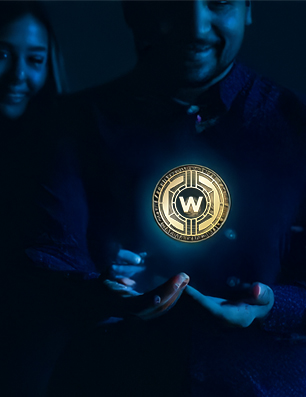- Written by: Jamie Sutton
- Sun, 19 Jan 2020
- United States
Cardano is a smart contract platform that seeks to deliver more advanced features than any blockchain protocol before it. Developed using a strict, academically sound philosophy, Cardano is looking to set new security standards for the rest of the crypto industry. In this beginner’s guide to Cardano, we’ll cover: What is Cardano? The Scientific Method… The post What Is Cardano? | The Ultimate Beginner’s Guide appeared first on UNHASHED.
What Is Cardano? | The Ultimate Beginner’s Guide
Cardano is a smart contract platform that seeks to deliver more advanced features than any blockchain protocol before it. Developed using a strict, academically sound philosophy, Cardano is looking to set new security standards for the rest of the crypto industry.
In this beginner’s guide to Cardano, we’ll cover:
- What is Cardano?
- The Scientific Method Behind Cardano
- How Does Cardano Work?
- Cardano’s Future
- How to Buy Cardano
- Best Cardano Wallet
- Conclusion
While Cardano has occasionally been referred to as the “Ethereum of Japan”, the team behind it considers the project to be a third generation blockchain — building on what existing blockchains have done right, and implementing novel technology where improvements are needed.
The Cardano blockchain was publicly launched on September 29th, 2017, with the platform’s native token, “ADA”, being made available for trading on October 1st. The team behind Cardano is made up of three entities:
Cardano Foundation: The Cardano Foundation is a Switzerland-based non-profit which aims to standardize, protect, and promote the Cardano protocol around the world. Most recently, the Cardano Foundation has connected with Ledger, the French hardware wallet manufacturing firm, to integrate ADA compatibility.
IOHK: Input Output Hong Kong (IOHK) is an engineering company that builds cryptocurrencies and blockchains for academic institutions, government entities, and corporations. Founded in 2015 by Ethereum co-founder Charles Hoskinson and Ethereum alum Jeremy Wood, IOHK describes itself as, “a decentralized company that loves small, innovative teams forming and executing ideas that cause cascading disruption”. IOHK is contracted to design, build, and maintain the Cardano platform through 2020.
Emurgo: Emurgo is a Japanese company formed to integrate, develop, and support businesses that want to utilize Cardano’s decentralized blockchain. It was Emurgo’s decision to hire IOHK and many argue that Emurgo looks to be the ConsenSys to Cardano’s Ethereum.
Ultimately, Cardano aims to become a better, more secure Ethereum. While both platforms seek to provide a strong foundation for developers to build smart contracts and decentralized applications, they differ in how they plan to get there. Cardano is the first blockchain platform to evolve out of a scientific philosophy and a research-first driven approach.
Also Read Our Cardano vs Ethereum Comparison.
Charles Hoskinson and IOHK have adopted a unique development philosophy that aims to raise the standards of due diligence we expect from blockchain developers. With this goal in mind, Cardano was built using a rigorous process that ensures the safety and security of its code by means of formal verification, first principles, and peer reviews.
Here’s what you need to know about Cardano’s scientific philosophy:
- Cardano is written in the Haskell programming language, which enables the formal verification of code. To formally verify code is to make a claim with mathematical certainty on what functions a program is capable, or incapable of performing.
- First principles thinking is the act of boiling a process down to the fundamental parts that you know are true and building up from there.
- A peer review is defined as an evaluation of scientific, academic, or professional work by others working in the same field.
This approach is completely new to cryptocurrency, which is surprising given the billions of dollars at stake in the industry. An impassioned Hoskinson reiterated this point in a recent interview:
“If they’re going to be worth this much money, shouldn’t we at least demand that somebody spends a few months of fucking time to go to the world’s top people and get those people to give it a little checkmark…that’s just common sense.”
The average person reading a white paper often has no idea how to interpret technical specifications. Therefore, there is an implicit trust that these technical elements are valid. But what if they aren’t?
Peer review is a time-tested method of ensuring a particular theory is sound. According to Hoskinson there are bright people who don’t have adequate domain experience within crypto who are writing papers that “kind of, sort of” work, but their security holes won’t be discovered for years because nobody is actively trying to tear them apart.
IOHK holds Cardano to a higher standard, because they feel that they have a moral obligation to ensure the platform’s quality and safety. The Cardano team hopes that this kind of rigorous development philosophy eventually becomes a standard in the cryptocurrency industry.
Cardano is composed of two primary parts: a settlement layer to handle cryptocurrency transactions, and a computing layer, which handles computation for smart contracts and decentralized applications (dApps).
The separation of payment and computation is a design choice intended to make future upgrades easier. This way the Cardano team is able to make changes to the settlement layer, such as tweaking the consensus algorithm, without affecting the computing layer. End users are unlikely to notice the behind-the-scenes improvements earned by this modular design.
Cardano regards itself as third generation blockchain. The reasoning goes something like this:
- Bitcoin is a first generation blockchain. Bitcoin figured out how to transfer value from one person to another without requiring a third party in the transaction, but isn’t well suited for smart contracts.
- Ethereum is a second generation blockchain. Ethereum brought programmable transactions (smart contracts) to the blockchain, but struggles with scale and governance, among other things.
- Cardano claims to be a third generation blockchain; citing scalability, interoperability, and sustainability as its major technological improvements lacking in earlier blockchains.
Cardano plans to realize its potential as a third generation blockchain by achieving consensus in a modular, future-forward way, handling large amounts of bandwidth efficiently, and coming up with clever ways of managing data without compromising security.
Achieving Consensus with Ouroboros
Cardano uses a modified proof-of-stake (PoS) consensus protocol called Ouroboros. Proof-of-stake algorithms choose who will make the next block randomly, with each person having a chance that is proportional to their total ownership (stake) of the native token. According to Charles Hoskinson, Ouroboros is among the most efficient consensus protocols in the crypto space. Here’s how it works:
Time in Cardano is divided into epochs (pronounced “epics”), which are further divided into slots. Slots are short time periods of around 20 seconds, and each slot has a designated leader. Slot leaders can create no more than a single block in their assigned slot. Transaction fees in a given epoch are pooled together and distributed to the slot leaders.
Slot leaders serve the same purpose in Cardano as miners in Bitcoin, but without the extreme computational demands required in a proof-of-work system. Cardano claims to offer a similar security guarantee as Bitcoin’s proof-of-work despite being considerably cheaper to run.
How are slot leaders chosen?
Network participants must hold a minimum threshold stake in ADA. All qualifying participants are considered electors for the next epoch. Slot leader elections are performed via a distributed method of random number generation. The final output is a unique identifier for an existing coin and the owner of this lucky coin becomes a slot leader!
Cardano finds itself relatively early in its development cycle. According to the project roadmap, Cardano is currently working on completing “Byron”, the bootstrap phase, in which they are actively making improvements to code, debugging, and working on the ‘Daedalus’ wallet. There are a lot of exciting features the IOHK team is working on, but it’s likely to be another year or two before we see Cardano operating at full capacity.
One of the coolest upcoming technologies being developed for Cardano revolves around the concept of interoperability. Cardano is of the belief that there won’t be one token to rule them all; instead, we will likely use multiple public blockchains for different purposes. If this is true, and the future presents a world in which Cardano, Bitcoin, and Ethereum can co-exist with legacy banking platforms like SWIFT and ACH, we’ll want some way to communicate between different blockchains and legacy networks.
Third generation blockchains like Cardano will have the capability to understand and watch other blockchains, while also enabling metadata and compliance framework optionality for legacy systems in a privacy-conscious way. This approach won’t permit custodianship of personally identifiable data.
Cardano also plans to work on a solution for the sustainability and governance of decentralized protocols. The development of cryptocurrencies today is funded mostly through initial coin offerings (ICOs). ICOs quickly generate huge lump sums which must be strategically allocated, leaving vulnerable investors hopeful that the ICO’s team does the right thing with their newfound riches. Unlucky cryptocurrency investors have learned that people don’t always do the right thing.
Cardano hopes to address this problem with a treasury system that is funded by inflation. In short, the idea is to print money into a decentralized bank account. The funds from this account will then be spent through an unspecified democratic process that will allow network users to vote on which proposals receive funding. IOHK believes that finding solutions to sustainability problems like this is essential for the overall health of a decentralized protocol.
‘ADA’ is the cryptocurrency native to the Cardano platform and is named after the world’s first computer programmer, Ada Lovelace. In the Cardano network’s current state, ADA is only used to send and receive value. The process for sending and receiving ADA works just like Bitcoin, Ethereum, and most other cryptocurrencies. In the future, ADA will also be used for staking, smart contracts, and the treasury.
ADA can be purchased on a variety of cryptocurrency exchanges, most notably Binance and Bittrex. You can find our step-by-step guide on how to buy Cardano (ADA) here.
The only wallet that currently supports ADA is called Daedalus. Daedalus is a highly secure wallet for the ADA cryptocurrency and was developed by the IOHK team. Although Daedalus is currently the only option, Ledger appears to be working on supporting ADA in the near future.
Just like Cardano, the Daedalus wallet has a promising roadmap that includes features like supporting non-ADA cryptocurrencies, custom themes and plugins, and a mobile wallet for Android and iOS. You can find more information regarding the Daedalus wallet at it’s official website here.
Cardano is an innovative third-generation blockchain platform that has been carefully constructed from the ground up in a provably secure manner. The Cardano team, driven by IOHK, is determined to outclass its competition by holding its product to scientific standards we haven’t yet seen in the cryptocurrency industry.
The Cardano project is far from finished. ADA currently holds the sixth largest market cap at the time of writing, placing it above plenty of complete, and nearly complete projects. It’s no secret that market cap isn’t a perfect metric, but it’s worth noting in this instance as it indicates there is a lot of enthusiasm about the platform.
Cardano has a long list of exciting developments expected to be realized over the next couple of years. Whether it’s the aforementioned interoperability and governance features, or the adoption of a “K”-based virtual machine to allow non-Haskell developers to participate, the Cardano project is setting itself up to be a potential leader in the cryptocurrency industry.
The post What Is Cardano? | The Ultimate Beginner’s Guide appeared first on UNHASHED.






